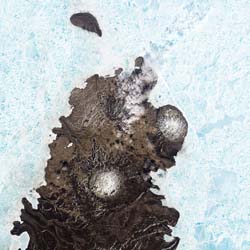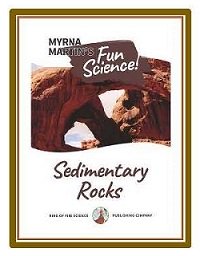Salt Domes have many uses
Oil and gas deposits around Salt domes
Salt domes are associated with oil and gas deposits in the Gulf of Mexico. They are increasingly used as impervious storage areas for dangerous chemicals. Some spent nuclear waste has been stored in these domes.

Domes of salt visible from space, NASA
Salt Deposits form Diapirs
Diapirs
Diapirs are rock formations that develop when ancient seas evaporate leaving behind thick layers of salt deposits. Over time the salt deposits are covered with deep layers of sediment carried into the basins by river water. The salt eventually turns into solid rock that is lighter than the surrounding rock.


Click for More Information and to Order
Salt bubbles upward
Diapirs moving upward
The salt is less dense than the country rock and begins to "bubble" upward breaking through weak spots in the sedimentary rocks. Salt domes are called diapirs, which comes from a Greek word meaning to pierce.
Table salt
Salt in a diapir is sometimes mined for table salt or used on roads to melt ice in the winter. The domes are also used as storage areas because they are almost impermeable.
Oil & Gas collects around diapirs
Oil deposits
The salt pushing upward forms pockets between the shale rocks and the domes. Oil and gas often collects in these pockets. Oil companies drill into the pockets to obtain the petroleum used to make gasoline. A major source of the oil found in the Gulf of Mexico is in the pockets associated with salt diapirs.
KIDS FUN Science Bookstore
Check out Myrna Martin's award winning textbooks, e-books, videos and rock sets. The Kids Fun Science Bookstore covers a wide range of earth science topics. Click here to browse.










